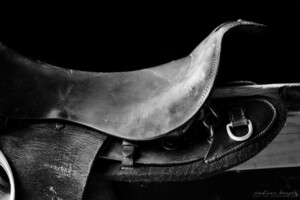Breed Focus: Waler
The Waler is considered to be one of the hardiest and heroic breeds in the world. Its lines go back to the first horses that were brought to Australia via the First Fleets. Cross-breeding between Arabs very popular in the early days of the Colony – Thoroughbreds, Clydesdales, Percherons, Timor ponies and the Cape horses bred what became the Waler.
It was survival of the fittest right from the start – the horses that survived the sea voyage and did reach Australian shores were already tough and had to adapt to the demands of the harsh Australian climate and landscape. While the horses were used to meet the transport and communication needs of the first settlers and beyond, the Waler (so-called because it emanated from New South Wales) really came into its own in World War I, when Australia provided mounted regiments.
Fighting for freedom
The first Light Horses shipped overseas were supposed to see action at Gallipoli, but when it became obvious that using the horses in this location would be impossible, the men who had been trained to fight on horseback were stripped of their horses and sent to fight on foot with the terrible consequences we know so well.
Members of the mounted regiments were then sent to the western deserts of Egypt on horseback after officials realised their specialised training and their horses were all part of the Australian package.
Courageous stories emerged of men and horses going without water and food for up to 72 hours but being brave and victorious in their battles. The Australian horses were known for never faltering in battle, clearing trenches and galloping long distances in intense heat and conditions.
When the war was over, the horses were sold onto the British and Indian army units when the Australian Government refused to bring them back
home because of the cost and the threat of disease. Those that could not be transferred to these units were destroyed by their officers who were concerned that they would be sold onto locals who may not have treated them as well, or cared for them as well as the soldiers had.
Breed facts
T
Saving the Waler While only one war horse, Sandy, was recorded coming home after World War I, care has been taken to ensure the survival of this wonderful breed. By the end of World War II, Australians were no longer using horses for work and it was all about riding horses for pleasure and the showier more exotic breeds were being sought after.
During the 1960’s and 1970’s, new lines of Thoroughbreds, Quarter Horses and Arabians were being imported and readily available. The Waler was looked on as a plain stock horse and fell out of favour and eventually the breeders sent their stocks to slaughter or left them to run wild on their properties.
During the 1980’s a small group of individuals made it their mission to track down some of the original blood lines of the Waler and save the breed from dying out. The Waler Horse Society of Australia was founded in 1986 with the aim of preserving and promoting the breed for future generations.
The Society were able to locate clusters of Waler herds that had been isolated without tainting the bloodlines. They have done a great job in breeding true to type retaining the good conformation, strong bone, frugality, intelligence, versatility, courage, and the amazing temperament that the Waler is famed for in the horse world these days. Want to know more about the Waler horse? Visit the Waler Horse Society of Australia for more information.
Did you know: the term Waler was given to these horses as they were bred in New South Wales.
Images of the Waler courtesy of Maddison Hooper Equine Photography




